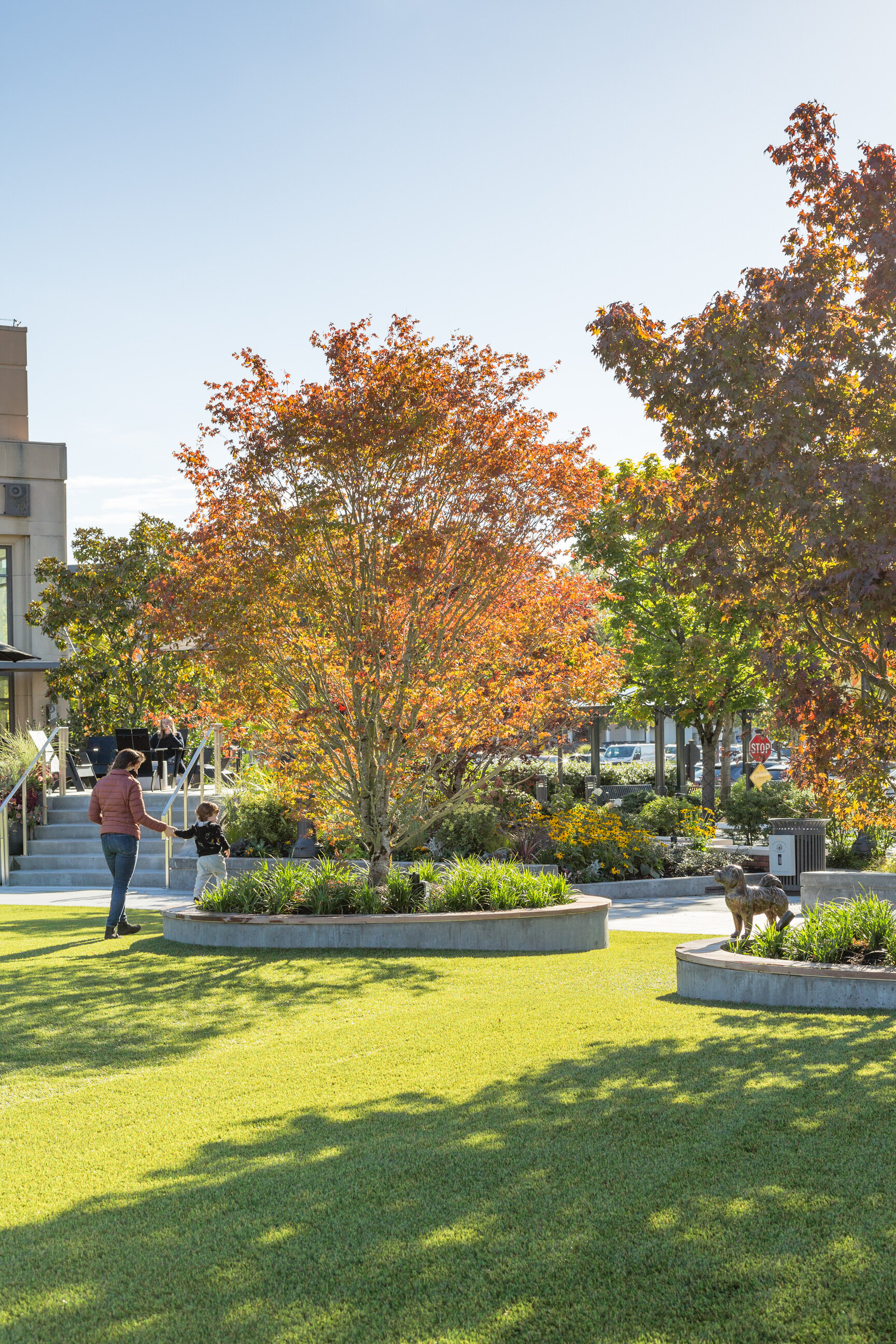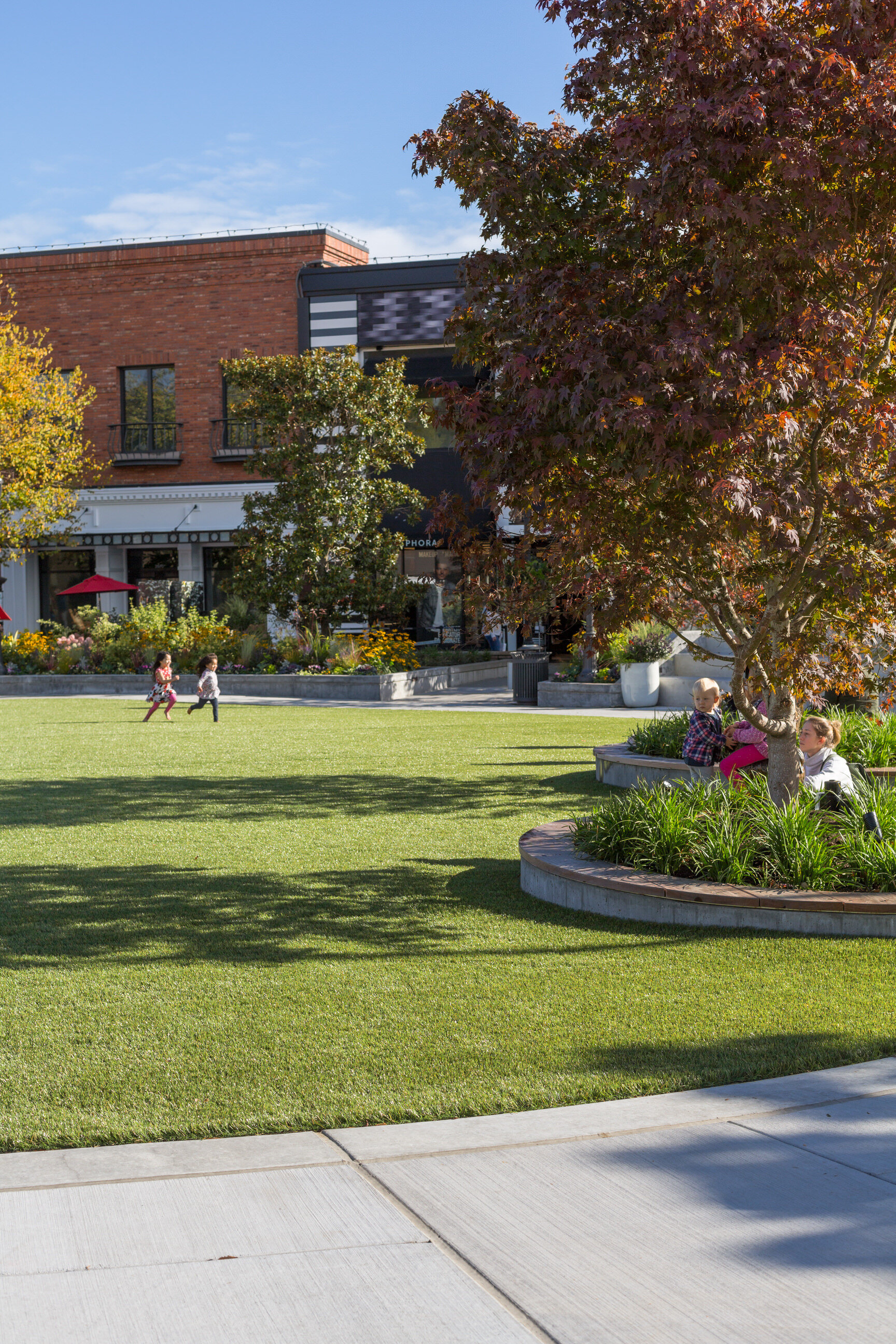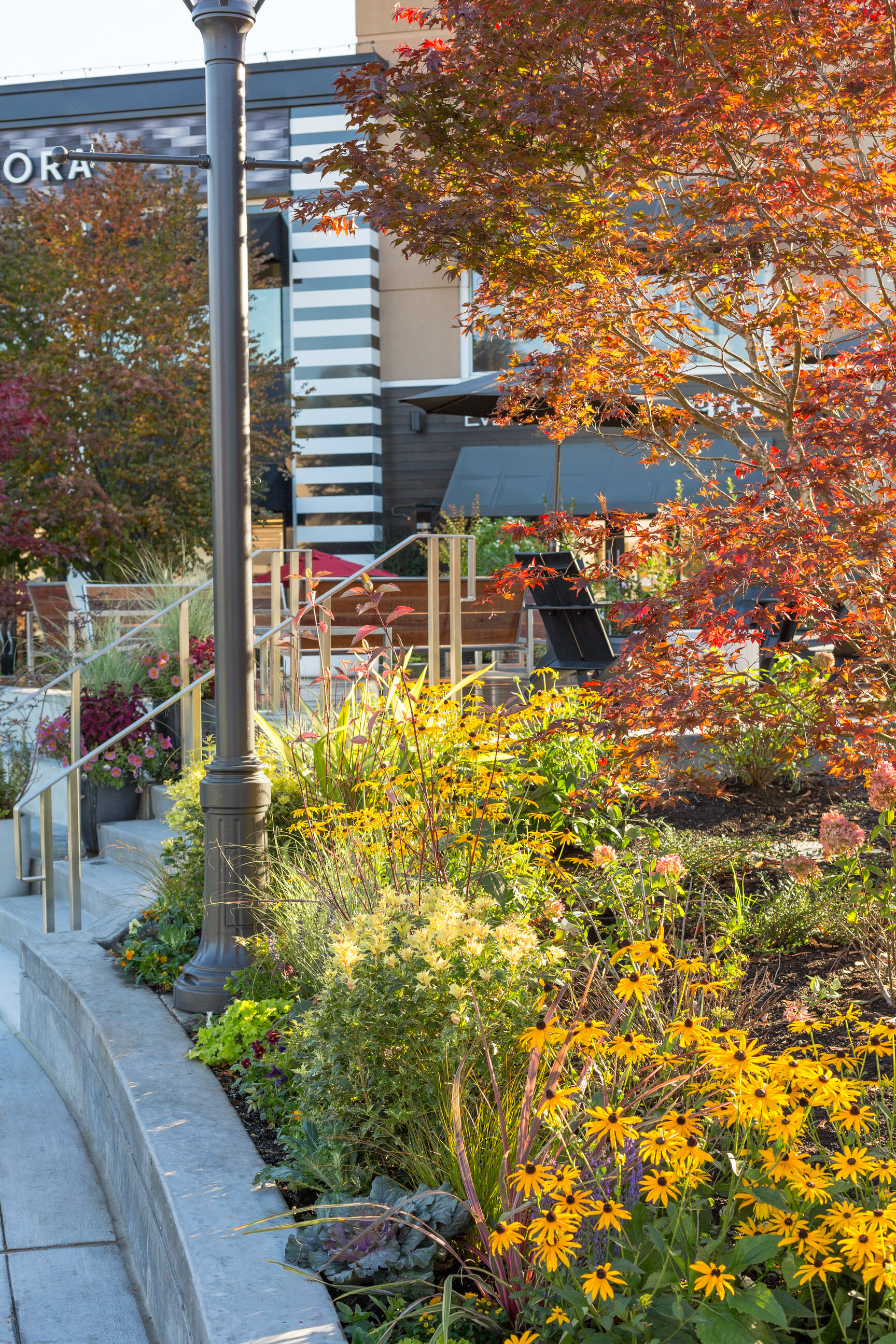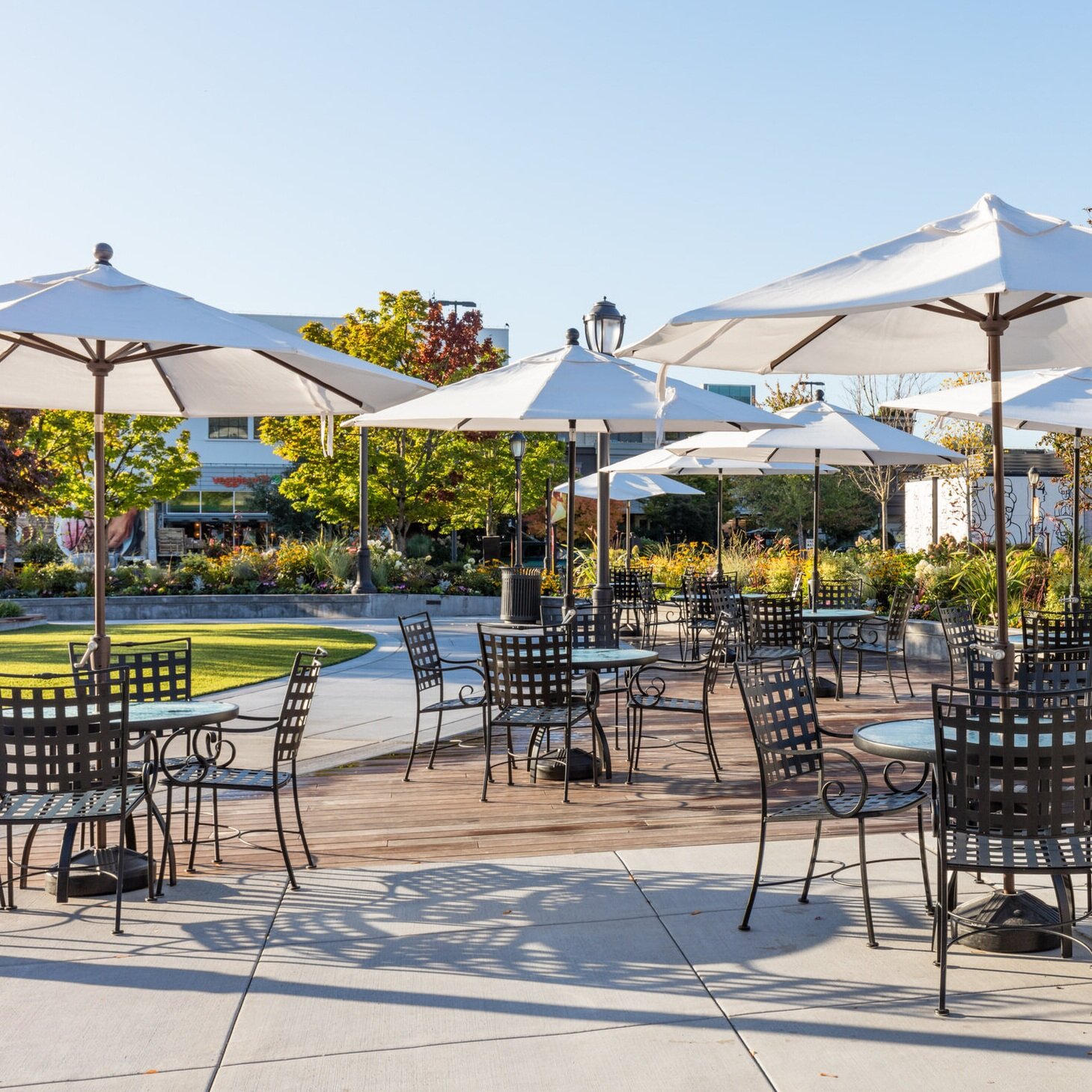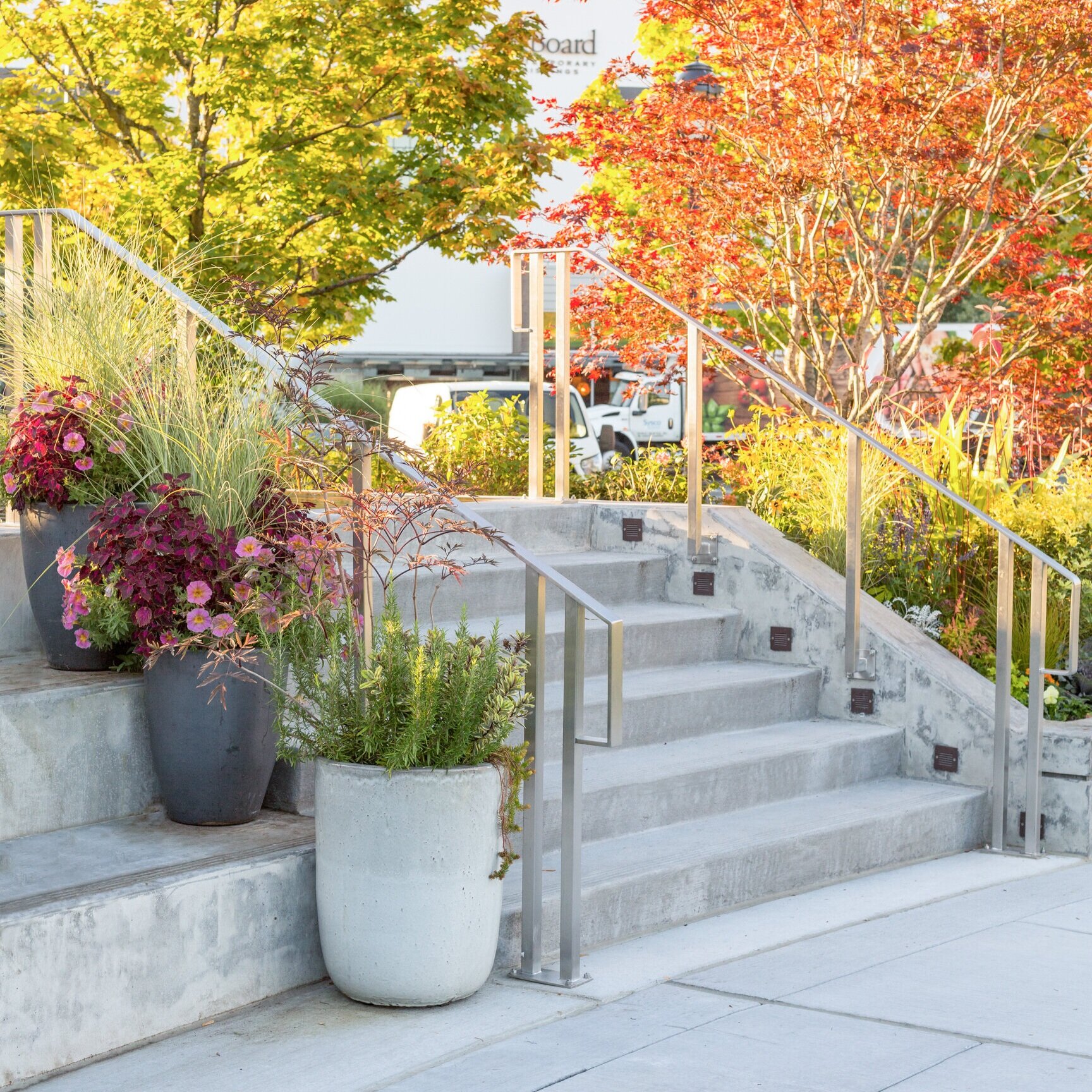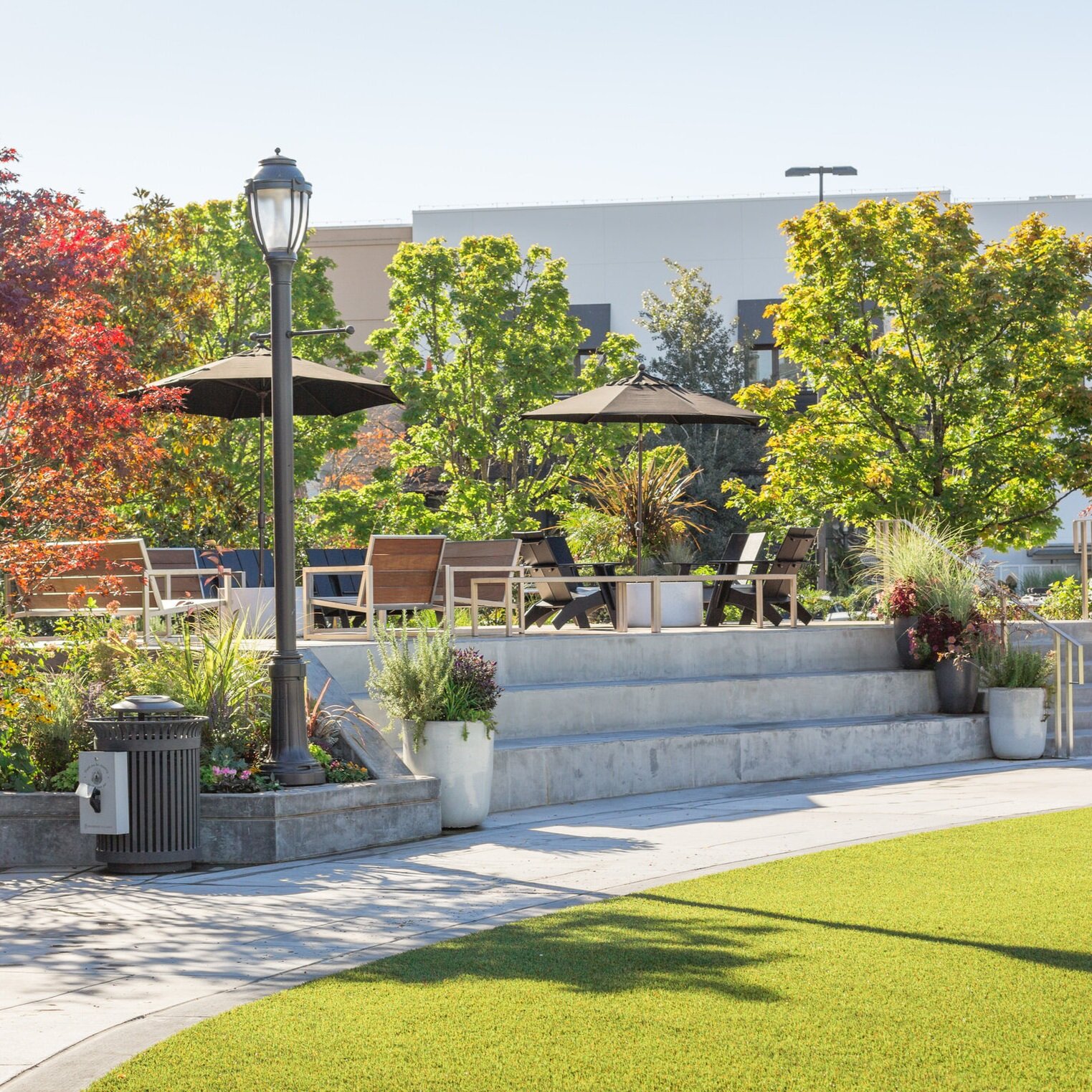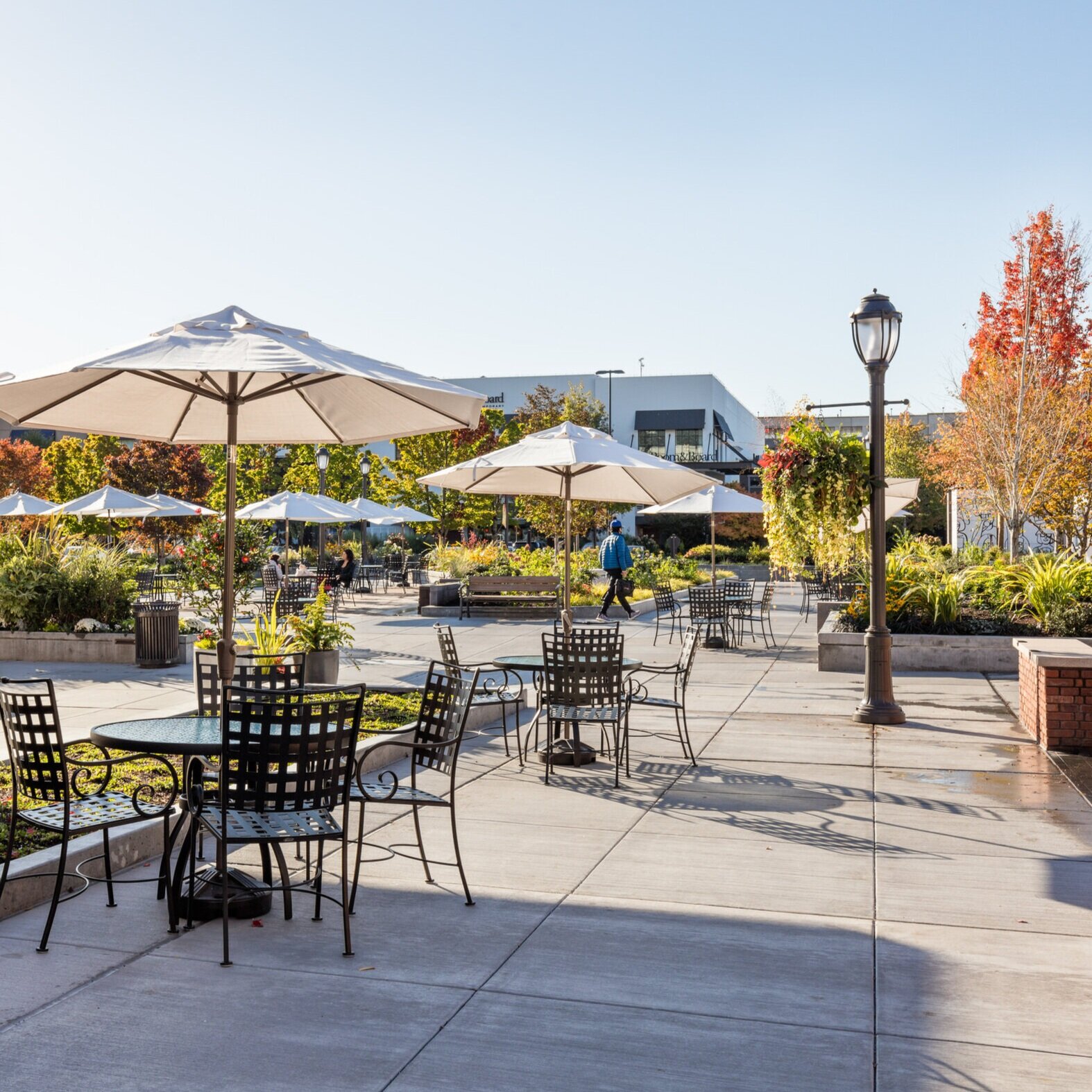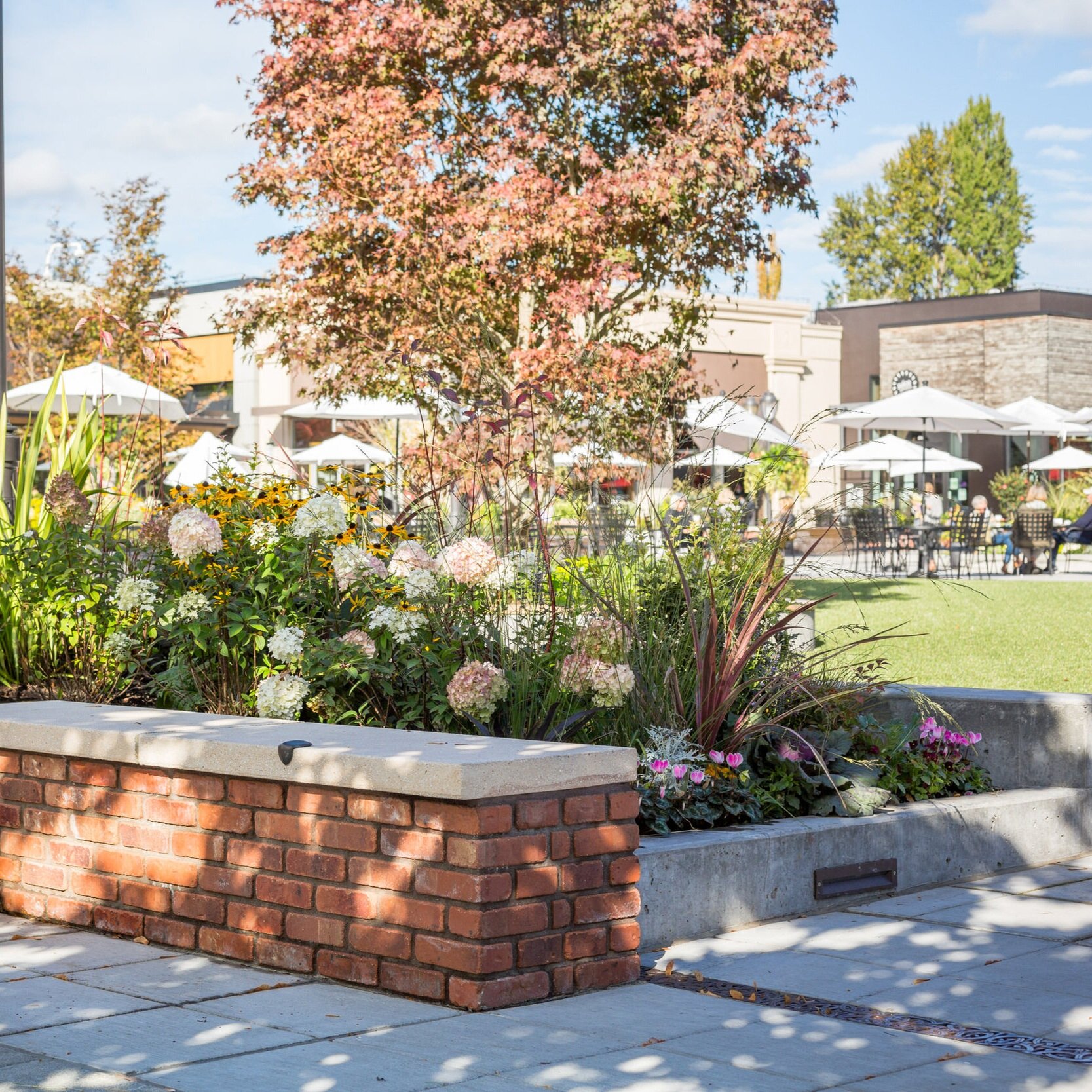The Village Green
“Date night just got better” my millennial son who lives in Wallingford told me after discovering the new Village Green at University Village in Seattle. He was surprised to learn that his boomer mom had contributed to the design of this engaging gathering space located in what was once an asphalt parking lot. It is a place that attracts people of all ages, not unlike University Village, which is an open-air lifestyle shopping center that purvey groceries, the latest technology, luxury items, and staples, as well as a variety of Northwest and global cuisine.
Perfect Timing
When Land Morphology started designing this centerpiece of the University Village shopping center, we had no knowledge of social distancing, COVID, and the changed landscape we are all now living in. The green was envisioned as an urban park; a place to host events and performances as well as a space to encourage shoppers and the community to linger longer, socialize out of doors, and patronize businesses.
Even during COVID shut down, the park and University Village at large have succeeded in providing much needed and appreciated outdoor places for residents of Seattle; many who live in small homes without easy access to open space. In the future there will be occasional crowds and performances. For now, the green is a much-needed safe outdoor respite for small groups and individuals.
Amenities
This .75 acre space packs in a lot of value. The slightly elevated stage (ipe wood) will eventually host small performances and films viewings. Crowds will lounge on large oval lawn. The simple circular promenade that embraces the oval is interrupted with small decks and seating terraces. Due to the thoughtful detailing and furnishings, today the stage at the southeast edge of the oval serves as a small outdoor living room that overlooks the oval green. Streets leading to the park have been reclaimed as generous pedestrian corridors with intimate seating areas, shade, and gardens integrated to provide quieter respites. With cars relocated to new parking garages at the edge of the shopping center, businesses have space to expand out of doors.
Sculpture by Georgia Gerber
Water walls offer the soothing sound of flowing water.
Shade and ornamental trees are underplanted with seasonally interesting shrubs and floriferous borders of perennial and annuals. Playful sculptures are tucked into borders.
Creating this inviting place was not without challenges. There is a lot going on underground as well as in the park. The entire park is built on piling. Therefore, everything with weight, including trees, had to be structurally supported. Soil mixes, drainage, and the irrigation system were carefully designed. And about the dogs: my son texted me during a visit and asked, “You can’t have intended to dogs to relieve themselves on the artificial turf???” My response: “Not ideal or intended, but considered… The irrigation systems runs daily to clean thing up!”
All Photos by Miranda Estes


